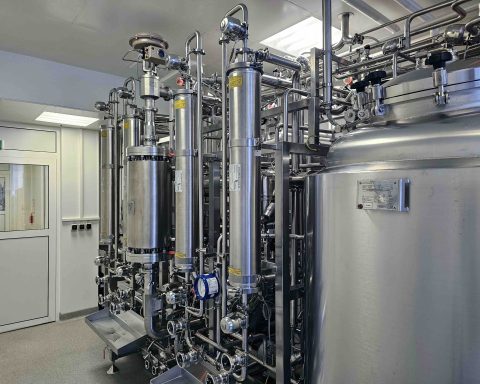The USP chapter <1224> defines the method transfer or transfer of analytical methods (TAP) as a systematically documented process that allows a laboratory (receiving laboratory) to perform an analytical method that has been validated in another laboratory (source laboratory), hence ensuring that the new receiving laboratory has the knowledge, prowess, and resources to perform the transferred analytical method as intended.
In contrast to analytical method validation, no detailed regulatory guidance exists for method transfer. Some high-level information is e.g. provided in the EU GMP guideline in chapter 6 and some useful instructions can be found in the WHO’s technical report 961, annex 7.
Thus method transfer is done through a proper protocol (the so-called method transfer master plan, in most cases written by the source site) because in case the transfer fails, the cause should be analysed through an in-depth investigation and questions e.g. “Is the underlying cause method related or training related?” may be answered. Irrespective of the cause of the failure, it is required to be acknowledged that any investigation would need time and hence might force time delays or at least will take resources.
Typically, a method transfer is performed just before the arrival of any key milestones in the process such as a new product’s release, start of the manufacturing process at the other site or the start of stability studies. Any delays in the transfer process can have costly impacts on the following steps.
According to the USP chapter <1224> method transfer can be executed via several approaches (Figure 1):
1. Comparative testing: Comparative testing involves the testing of a number of samples, that have been predetermined, of the same lot by both the source and the receiving laboratory. Other approaches e.g., if the receiving laboratory shows adherence to a predetermined acceptance criterion for the recovery of an impurity in a spiked product, may be possible.
Comparative testing functions based on a pre-approved transfer protocol that contains the details of the method, the samples to be used, and the acceptable values including ranges for variability. This protocol can be part of the method transfer master plan (MTMP), or more recommended a separate one, just dealing with that specific method, while all methods and much more general information is listed in the MTMP. Meeting the predefined criteria is the minimum eligibility for the receiving laboratory to be able to perform the analysis using the method.
2. Covalidation testing: For this type of testing, the laboratory performing the validation of an analytical method is qualified to run the procedure. The source laboratory can include the receiving unit as a part of their interlaboratory covalidation process, wherein the receiving laboratory is involved generating data for the proper assessment of reproducibility.
This can be done together with the validation team at the source laboratory or at the receiving laboratory on their own. This assessment is part of the pre-approved covalidation protocol that provides the details about the procedure, the samples to be used, and the predetermined acceptable criteria.
3. Revalidation: Revalidation is also known as partial validation and is performed when certain changes in the protocol such as changes in e.g. the sample composition, the matrix composition, or impurity content occur. From the method transfer’s viewpoint, changes in the method are probably 100% for sure as e.g. even reagents from other suppliers can be bought. Revalidation can be performed at the receiving site without any involvement of the source site. Of course any help of the source site is always highly welcomed.
4. Transfer waiver: Although this is rare but there may arise some instances where the transfer procedure is waived. For example, if the analytical method that is being transferred is same or very similar to one that is already in use or if the composition of the new drug is similar to a pre-existing product and it is analyzed by a method that the receiving laboratory already has enough experience working with, transfer may be waived.
A method can also be waived if the qualified and trained personnel for development, validation, and routine analysis from the source laboratory are moved to the receiving laboratory to perform the same method. But in all cases of waiving the transfer, an acceptable justification must be included.
With the authorities showing an ever-increasing scrutiny to ensure proper transfer of methods, the laboratories must push themselves to allow themselves the planning and effort to properly perform the transfer exercises. Conventionally, it was believed that a previously validated method would transfer without any issues. This mind-set, in the past, has caused multiple problems in terms of transfer failures and essentially jeopardizing the validity of the obtained data. With new complex technologies of the methods, there is a need to recognize the actual performance of the method, its areas of concern, and the correct design for the method transfer to ensure validity of the data.
For the laboratories to avoid any hiccups during the transfer process, it is important to first understand the rationale behind such transfer. A proper understanding of the pipeline helps analysing the details involved in the transfer procedure. The next important thing is to accumulate all important information that the receiving laboratory would require to properly run the method post transfer.
It is important to check all the relevant documents and correct them (if needed) before handing over to the receiving laboratory. It is often advisable to assimilate the original validation report, developmental reports, already known performance issues and their possible troubleshooting, and representative historical data as a „knowledge bundle „and pass it over to the receiving laboratory. A list of all documents to be passed over is a typical chapter of a method transfer master plan. This practice will ensure the passage of all relevant information to the recipient. A schematic overview of the main steps during a method transfer are shown in Figure 2.
Another important aspect of efficient method transfer is the training of the involved personnel. In today ‘s world of complex technologies, a simple paper transfer (method instructions) is definitely not enough to ensure correct performance of the method by the recipient laboratory. Instead, it is of utmost importance that experienced personnel train the new analysts hands-on and walks the recipient analyst through the know-how of the performance of the method on a routine basis and generate significant data.
The most important aspect of a good transfer should never be forgotten: an open-minded, responsive and trusting communication! Both sites should really be highly motivated to help each other and solve all problems which might occur. There are details which can make a method difficult to work which are not mentioned in any test instruction and cause a lot of frustration. This can be so simple things like the mixing procedure for a sensitive enzyme, which tolerates inverting but no vortexing at all…
In this virtual and globalization age, pharmaceutical, biotech and other establishments are welcoming outsourcing parts of their functionality to contract research organizations (CRO) or the bigger companies with global footprints own different laboratories in various parts of the world. Because of these different locations, a company may decide to manufacture in one location and perform the stability test in another location and manufacture a new product in a third production unit. This essentially means that an analytical method needs to be transferred multitude of times during its lifetime and hence add a lot of complexity in the entire process. Method transfer now is already complicated enough and with the regulatory scrutiny continue to grow, there will be a continuation of the increase in clarity of the method transfer process, to ensure that the method transfers are being performed appropriately.
About Author
Dr. Janet Thode is CEO and senior consultant of Loesungsfabrik whose MPL division is a Pharma consulting firm in Germany, specialized in analytical quality control. With more than 8 years of practical laboratory experience (among others in a French CRO), she is always interested in finding realizable solutions in the fields of international method transfer, analytical method validation and filter validation topics. Working with global acting pharmaceutical companies in complex projects, she focusses on a good communication.
This article is exclusive to pharma mirror readers only, do not copy!







